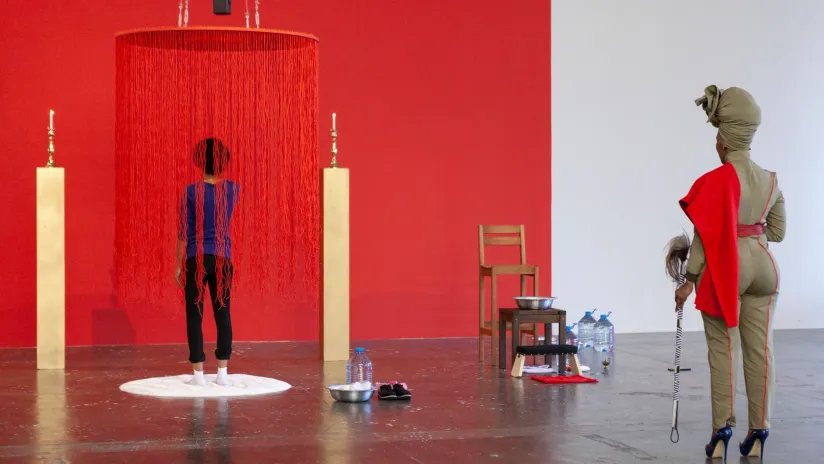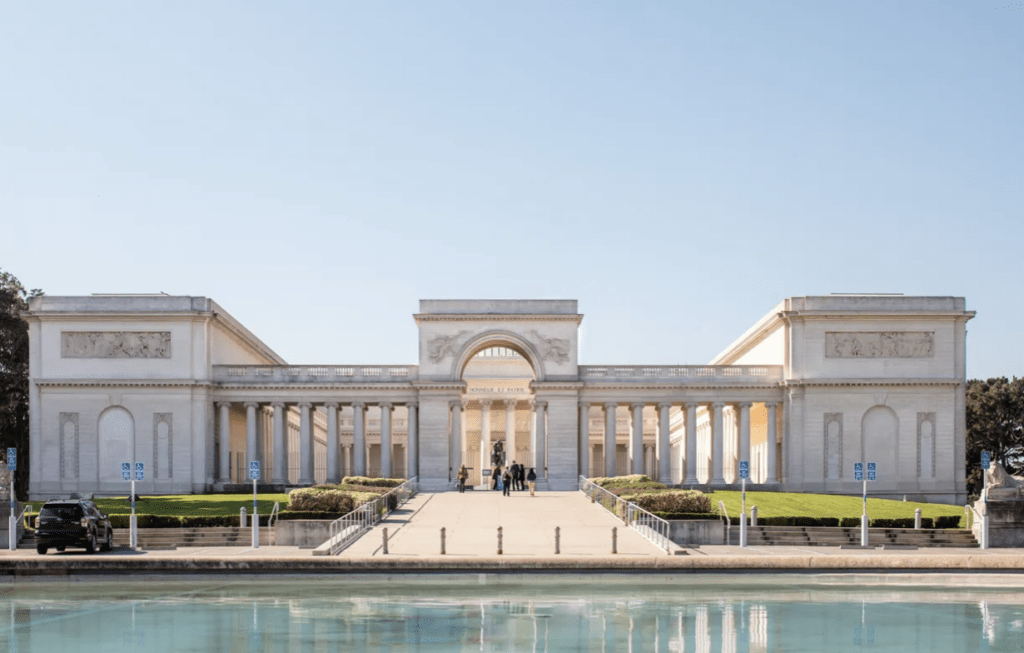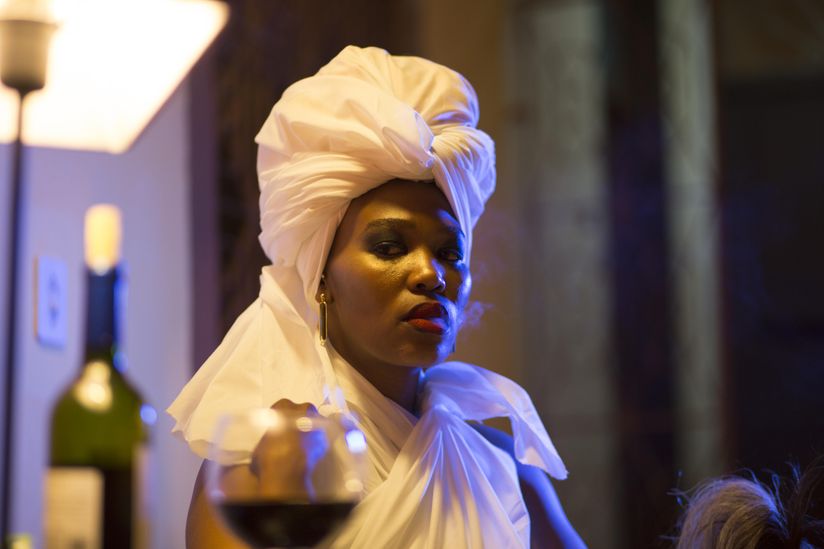The opportunities for artistic expression are endless; artists continue to innovate, grow and express themselves in different art spaces. Opened December 17, 2022, Lhola Amira: Facing the Future brings together Amira’s wholesome works, while launching the Fine Arts Museums of San Francisco’s new African art program, dedicated to growing its permanent collection. This exhibition is Amira’s first solo showcase in the United States. This collection will be used as a site of exploration for the evolving nature of African arts and their meanings today. Natasha Becker, the inaugural curator of African art will steer this program featuring contemporary artists whose work draws on and engages the artistic and cultural traditions of Africa.

Image courtesy of SMAC Gallery
The South African artist Lhola Amira, was born in 1984 in Gugulethu and works to address the wounds left by colonization and create spaces for healing through connection to the earth, the ancestry, and the spiritual. Amira’s practice includes “Appearance,” photography, video, and sculpture presented under the term “Constellation.” Amira uses capitalized pronouns THEY/THEM/THEIR in THEIR work and in conversation about THEIR plural existence that is rooted in THEIR traditional Nguni practice and spirituality. Amira has participated in notable group exhibitions, including the 33rd São Paulo Biennial, and held a number of residencies, namely the AiRS (Artist in Residence Skövde Art Museum) residency in Skövde, Sweden in 2017; the Jiwar Creation and Society residency in Barcelona, Spain in 2015; and at Vasl Artists’ Collective in Islamabad, Pakistan in 2010.
The Fine Art Museums of San Fransisco (FAMSF) notes Facing the Future brings together Amira’s new Philisa: Zinza Mphefumlo Wami—or portal for spiritual reflection and connection—and THEIR single-channel video projection exploring indigenous forms of healing within the African diaspora, IRMANDADE: The Shape of Water in Pindorama (2018–2020). They further explain the works are created in response to the permanent collection’s ancestor sculptures. Amira’s Philisa installation or “Constellation” Zinza Mphefumlo Wami invites viewers to “be at rest with spirit.” Designed for remembrance and resurrection, this pairs beaded curtains with a ceremonial salt bowl for cleansing, golden pillars with candlelight and water pitchers for channeling, and song to help invoke ancestral energies. The many ways in which African artworks convey the sacredness of life is explored further in the permanent collection’s ancestor figures, objects for communication with the divine, and masquerades that animate and revere previous generations.
The curator, Natasha Becker believes Lhola Amira is unique in THEIR practice and reason led Amira to be the first artist to participate in the program. She sees THEY are THEMSELF a plural being, an ancestral presence, and THEIR aesthetic intervention at the museum importantly acknowledges the wounding of Africans and Native Americans for the sake of greater love and compassion.

Image courtesy of Artthrob
About the Fine Arts Museums of San Francisco
The Fine Arts Museums of San Francisco oversee the de Young museum, located in Golden Gate Park, and the Legion of Honor, in Lincoln Park. It is the largest public arts institution in San Francisco, and one of the most visited arts institutions in the United States.
The de Young originated from the 1894 California Midwinter International Exposition in Golden Gate Park and was established as the Memorial Museum in 1895. It was later renamed in honor of Michael H. de Young, who spearheaded its creation. The present copper-clad landmark building, designed by Herzog & de Meuron, opened in October 2005. Reflecting an active conversation among cultures, perspectives, and time periods, the collections on view include American painting, sculpture, and decorative arts from the 17th to the 21st centuries; arts of Africa, Oceania, and the Americas; costume and textile arts; and international modern and contemporary art.

The Fine Arts Museums of San Francisco respectfully acknowledge the Ramaytush Ohlone, the original inhabitants of what is now the San Francisco Peninsula, and acknowledge that the Greater Bay Area is the ancestral territory of the Miwok, Yokuts, Patwin, and other Ohlone. Indigenous communities have lived in and moved through this place over hundreds of generations, and Indigenous peoples from many nations make their home in this region today. Please join us in recognizing and honoring their ancestors, descendants, elders, and their communities.

Image courtesy of SMAC Gallery


